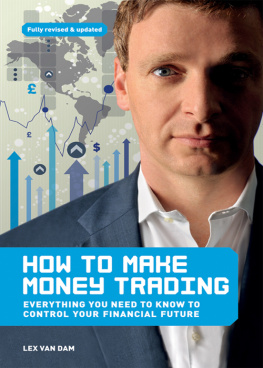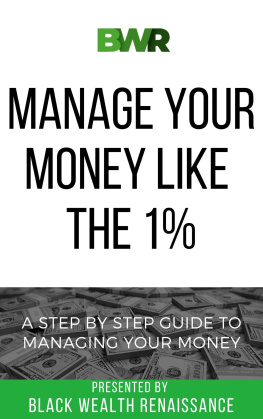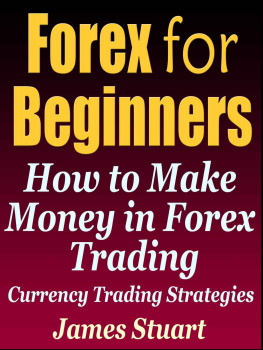While every precaution has been taken in the preparation of this book, the publisher assumes no responsibility for errors or omissions, or for damages resulting from the use of the information contained herein.
MANAGE YOUR MONEY LIKE THE RICH AND FAMOUS
First edition. September 4, 2020.
Copyright 2020 N J Travers.
ISBN: 978-1393922926
Written by N J Travers.
10 9 8 7 6 5 4 3 2 1
Contents
MANAGE YOUR
MONEY
LIKE THE RICH
AND FAMOUS
LEVERAGING NEW INVESTMENT
TECHNOLOGY FOR
THE SMALLER INVESTOR
By N J Travers
Disclaimer
This publication, is intended to be read by an international audience. Monetary amounts are denominated as Pounds Sterling, but could equally be denominated as US Dollars, or Euros. Financial businesses in any of these countries, tend to round monetary figures to the nearest thousand anyway, so a direct comparison of figures would not make any sense.
Monetary amounts are not meant to be accurate, but exist to illustrate the sort of financial levels being discussed. If your monetary denomination is not roughly equivalent to Pounds Sterling, you will need to convert the figures to your own denomination using current exchange rates.
This publication deals with broad, strategic, financial concepts. The names of companies, businesses, financial institutions, platforms, and funds, are deliberately omitted. Markets change and evolve all the time, with new entrants joining on a regular basis. Innovation, rationalization, retrenchment, and redirection continually alter the desirability of any specific investment. Opportunities available in one country or territory, are not available in others. Also, financial regulations, between different countries and regimes, can differ vastly.
Using the financial strategies within this publication, and research of available markets, should enable any investor to construct their own financial strategy. This will be specific to their own needs, financial situation, country, regulatory regime, and markets.
Chapter One: The Problem
Vanishing Interest Rates
The Bank of England and the Federal Reserve, have suggested interest rates are likely to remain low for the next few decades. In this low interest rate environment, millions of smaller savers and investors will fall into the trap of seeing their hard earned savings steadily erode in value.
The good news, is that smaller investors can now take advantage of new investment paradigms. With modern technology, smaller investors can enjoy the sort of monetary growth traditionally only enjoyed by the rich and well connected.
First, though, we need to learn to think like a bank.
A Bit of Background
My daughter received some money for her eighteenth birthday, so I looked for a book to teach her about the principles of modern saving and investing. What I found was an alarming lack of anything remotely useful, or up-to-date. There are plenty of books on how to gamble everything on the stock market. On currency exchanges, binary options, or crypto currencies. And plenty of so called 'get rich quick' schemes.
However, for the smaller investor, there was next-to-nothing to teach anyone the modern principles and skills of saving and investing. Nothing on how to use technology to build up from zero in a steady, reliable, sensible, low risk way; nothing on how to use technology to make the money already saved grow faster than inflation and taxes - just like the rich. So I decided to write such a book myself.
Before I continue, who am I to tell you what to do with your money? Let me introduce myself:
For twenty-five years, before changing career path to become a professional writer, I worked in the financial services sector, for insurance and banking institutions. I qualified as a financial advisor, though I have never been licensed to give regulated advice. And I worked with Lloyds of London. I have designed and marketed savings, investments, and pension products. I have designed and formulated the advice financial advisors give to customers. And I have worked on the compliance and auditing of that advice. In short, I believe I have a reasonable understanding of how banks and financial institutions work and the processes they use to make money. Which is why I use so few of their products.
I am not a rich financier trying to persuade you to invest in fancy investment schemes or 'Get rich quick' scams. And I am not selling any financial products. In fact, throughout this book I won't mention a single company or product by either name or brand. There is, in fact, no point in me mentioning products and brands at all. Because in your location, in your part of the world, the products and brands you can access, and the regulatory regimes that control what you can do, will be different. What I am interested in, are the principles and strategies offered by new technology. These will work for anyone, anywhere in the world, provided you have access to a bank account and a computer or smartphone.
I'm a writer, all I am selling is this book. I am also a smaller investor, practicing what I preach. And now sharing, with you, the financial principles and strategies that I have found to work for myself. I believe they can work for anyone. If this book sells well, I may become a slightly larger investor, but I doubt if I will ever be rich and famous.
I first became interested in investments through my Grandfather. He was an accountant for a national business and he also managed the investments for their pension fund - what today we would call an institutional investor.
Every time my Grandfather bought shares for the business, he also placed a private order for a few shares of his own. I'm not sure if that would be allowed under current UK legislation, but back then it was perfectly legal. Over the course of a few decades, my Grandfather built up a respectable share portfolio, which he traded through a broker.
After his retirement, it became my Grandfather's hobby to manage his shares and supplement his pension from the portfolio income. In fact, the best present I ever bought him was an annual subscription to the Saturday Financial Times. I have many happy childhood memories of us sitting at his dining room table, pouring over the share pages of the Financial Times, while he compiled the list of buy and sell orders which he would give to his broker on Monday morning. Then we would play chess and other board games.
I was far too young to understand what my Grandfather was doing, but he derived a lot of pleasure from reading his present very closely every week. I paid for that Saturday subscription every year until his death.
Even though the technology I am talking about in this book would be alien to my Grandfather, he would definitely recognize the principles and strategies. And he would approve.
Thinking like a Bank
We all think we know how banks make their money. We are wrong. We think they use the 'deposit to lend' model, in which banks take all the small amounts of money deposited by their customers, lump it all together and lend it out in larger amounts, to other customers and businesses. Then a proportion of the interest made from these loans is paid to the owners of the original deposits.
However, an indication this model no longer works, is seen in the ever shrinking interest rates banks pay to depositors. But banks are still making huge profits - how come, and why have banks become so greedy?
The answer to this apparent greed, is that banks have not worked on a 'deposit to lend' model for a very long time. In fact not since the middle of the last century. Today, the amount deposited by customers has very little bearing on a bank's loan business. Banks actually buy in the money they require from central banks, at discounted rates, then lend that purchased money out as loans to customers.











